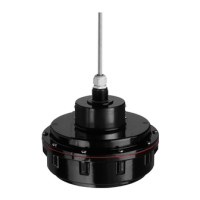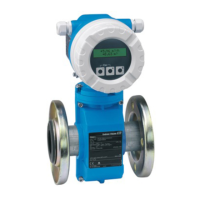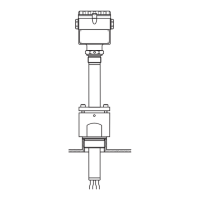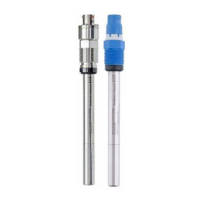Deltabar S
Endress+Hauser 51
Installation instructions
In order to obtain more precise measurement results and to avoid a device failure, mount the capillaries as
follows:
• vibration-free (in order to avoid additional pressure fluctuations)
• not in the vicinity of heating or cooling lines
• insulate at colder or warmer ambient temperatures
• with a bending radius of ≥ 4" (100 mm).
Vacuum applications
For applications under vacuum, Endress+Hauser recommends mounting the pressure transmitter below the
lower diaphragm seal. A vacuum load of the diaphragm seal caused by the presence of filling oil in the capillaries
is hereby prevented.
When the pressure transmitter is mounted above the lower diaphragm seal, the maximum height difference
H1 in accordance with the following illustration on the left must not be exceeded. The maximum height
difference is dependent on the density of the filling oil and the minimum expected pressure that is permitted
to occur at the diaphragm seal on the positive side (empty tank), see the following illustration, on the right.
Pressure on the negative side of the differential pressure transmitter (p
–
) when the tank is empty (min. level)
Pressure on the positive side of the differential pressure transmitter (P
+
) when the tank is empty (min. level)
Differential pressure at the transmitter (∆p
Transmitter
) when the tank is empty
Result:
If the tank were full, a differential pressure of –51.80 mbar would be present at the differential pressure transmitter. When
the tank is empty, a differential pressure of –149.90 mbar is present. Therefore, a 500 mbar measuring cell is required for
this application.
= 197.77 mbar + p
= 1.8 m • 0.96 • 9.81 + 0.3 m • 0.96 • 9.81 + p
kg
dm
3
m
s
kg
dm
3
m
s
p = p + p = Hv • • g + H1 • • g + pρρ
H1
Fl
Hv
–
Fl i
i
i
= 47.87 mbar + p
p = p + p = Hu • • g + H1 • • g + pρρ
M
H1
Fl
Hu
+
= 0.2 m • 1 • 9.81 + 0.3 m • 0.96 • 9.81 + p
kg
dm
3
m
s
kg
dm
3
m
s
i
i
i

